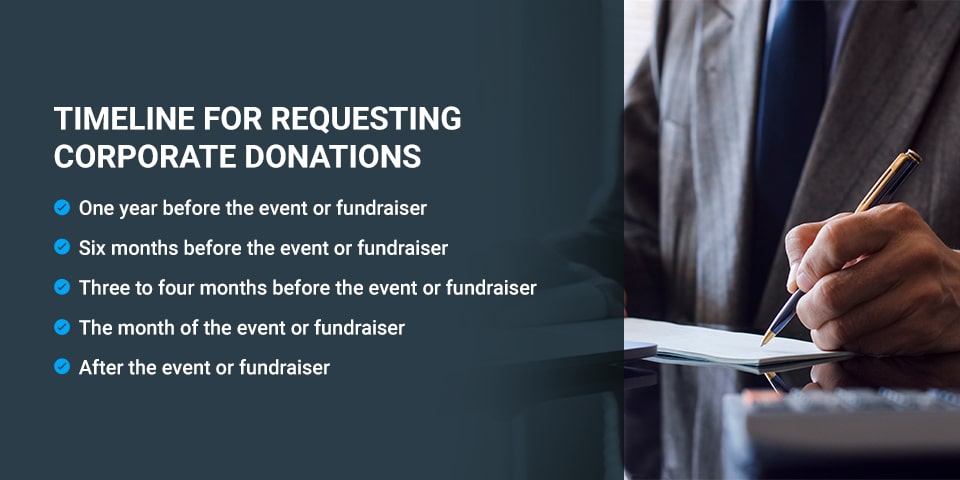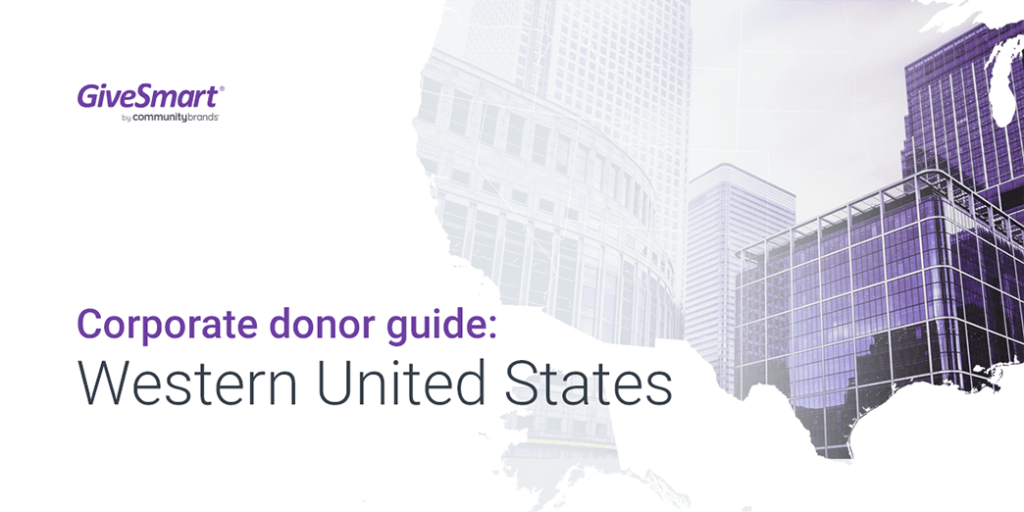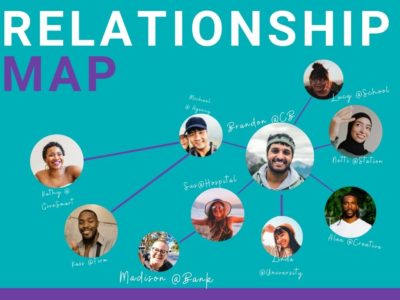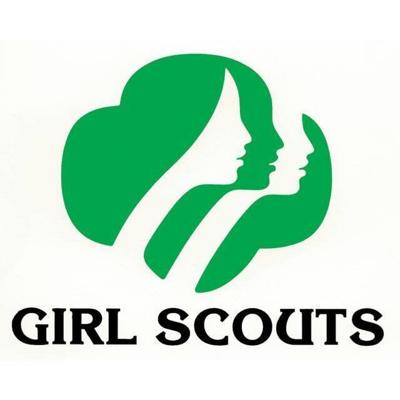Apr 18, 2022
2022 corporate donor guide: Northeast United States

Nonprofit organization fundraising takes many forms, yet few generate the same lasting impact as corporate partnerships do with businesses located right in your local community.
This guide identifies corporate partners and businesses in the Northeast United States with prominent philanthropic opportunities. From sourcing desirable live or silent auction items to setting up gift-matching programs to procuring monetary in-kind donations, grants and sponsorships, we’ve got an in-depth resource for Northeastern nonprofits to stabilize their funding and expand their missions.
Northeast Corporate Donor Guide: An Overview and How to Use This Guide

Nonprofits located in the Northeastern U.S. can use this guide as a launching point, leveraging its tips, tricks and corporate donor list to help raise money and procure further donor engagement. It also suggests the appropriate timelines to solicit corporate donation requests, as well as how to write general fundraising letters and what to include in funding requests.
Overall, this guide will cover:
- A list of top corporate donors in the Northeastern United States, covering:
- How to research and ask for funding to help raise money from corporate partners
- Timelines to secure corporate donors in your state
- The types of donations and engagement to request from corporate sponsors
For more regional corporate sponsorship guides, or for additional insights on asking for donations, securing funds, promoting events and other nonprofit management topics, be sure to check out the GiveSmart blog and online guide repository.
Timeline for Requesting Corporate Donations
Nonprofit fundraiser timelines will vary based on how corporations grant donation requests. If donations come from an established corporate foundation, the deadlines for preparing and sending requests will be longer— six to 12 months, on average. If your organization receives sponsorships or donations on a situational, discretionary basis from an open-call portal, preparation timelines will be considerably shorter — a few days to one month.
Follow the timeline below to prepare for requesting corporate donations of both types, foundation granted and discretionary.
1. One Year Before the Event or Fundraiser
One year out from a particular fundraising initiative or event, nonprofits should begin prepping the basics of their sponsorship letters.
- Put together a nonprofit press kit: Nonprofit press kits are preprepared materials that provide the background information and context of your nonprofit. Typical elements of a nonprofit’s press kit include mission and value statements, letter templates, event calendars, high-quality photographs and staff contact information.
- Compile impact reports: Create an overview of your nonprofit’s major achievements, including both quantitative data as well as qualitative quotes from staff, volunteers and served community members.
- Identify potential corporate donors: Begin researching corporations that take public funding requests. Prioritize things like their mission and values, past giving history, products and services and overall company reputation.
- Create a qualified leads list: Companies with an intuitive interest in the work your nonprofit does, or organizations you may have an inside connection to, should be at the top of the qualified leads list of those most likely to engage with your organization.
- Initiate relationship-building strategies: Open lines of communications with crucial philanthropic stakeholders or decision-makers at an organization. You’ll find more on how to do this later in the guide.
2. Six Months Before the Event or Fundraiser
Six months marks the transition from nonprofits preparing their sponsorship letters to nonprofits beginning to initiate funding requests.
- Create a pitch calendar: Include hard deadlines for foundation proposals and self-imposed deadlines for open funding requests, prorating each according to time and resources.
- Write your letter of inquiry (LOI): LOIs are typically one to three pages long, detailing your organization’s mission, impact and the program or event you’re proposing funding for. Many corporations solicit LOIs during grant application periods as well as for open-call, ongoing donation requests.
- Continue relationship cultivation: Nurture any points of contact you’ve established with a qualified company as organically as possible, inviting leads to nonprofit events, volunteer opportunities and more.
3. Three to Four Months Before the Event or Fundraiser
A few months before your nonprofit’s major fundraising event is the ideal time to begin sending your prorated sponsorship letters.
- Send donation request letters: Follow the pitching calendar you created at the six-month mark and include all materials outlined in a request’s rules.
- Ask current donors for referrals, renewals: Review your current donor list. Begin initiating your nonprofit’s procedures on asking for donor referrals or donation renewals, especially for reoccurring gift pledges. From that list, you can also strategize additional connections to businesses and organizations to reach out to, furthering donation leads
4. The Month of the Event or Fundraiser
One month before your fundraising event marks the time to amplify outstanding donation requests, making the most of the work you’ve done.
- Make donations mobile: Consider online donation software designed for creating, collecting and growing nonprofit fundraising campaigns digitally.
- Maintain momentum on social media: Use social media to creatively advertise and promote your nonprofit’s fundraising initiatives, as well as a link to your online donation portal.
5. After the Event or Fundraiser
The work doesn’t stop once a fundraising campaign wraps up.elis
- Give formal thanks: Send personalized, handwritten letters to each of your corporate sponsors. If resources allow, include a token with the note — a framed photographic, calendar, certificate, etc. — to relay further thanks and help commemorate the event.
- Stay connected: Invite donors to join your email list, newsletter mailings, special donor groups and more to stay up to date on the latest within your organization.
When Should I Expect a Response to My Donation Request Letter?
Donation requests made through a company’s foundation will typically see responses within a one- to two-month window following the foundation’s deadlines. Funding requests initiated through discretionary or open-donation calls can expect to hear back within two weeks to a month.
When Should I Follow up With Corporate Donors to Help Raise Money?
Generally speaking, you should not follow up with donation requests submitted to a company’s foundation. Foundation portals tend to be structured and partially automated, meaning they may not have a place to relay any follow-up communications.
For discretionary requests, follow-up is more subjective. Most websites state a window of time for answering requests, typically within two weeks to a month. If that timeframe has passed without a response, nonprofits with a pre-established corporate donor connection — with an employee, with a community relations coordinator, etc. — may consider sending a brief, yet professional, email to their contact checking in on progress.
Corporate Donors in the Northeast
Detailed below are prominent corporations with strong regional ties to 12 Northeastern states. This state-by-state list provides ideas and inspiration for monetary and in-kind donation procurement for successful nonprofit organization fundraising in the Northeastern United States.
1. Connecticut
Over 15 Fortune 500 companies call Connecticut their home state. From major insurance and financial institutions to law firms, real estate agencies, engineering companies, health care outfits and more, there’s no shortage of options for nonprofits seeking nearby corporate partners to help raise money.
What’s more, many of the state’s small- to medium-sized organizations dedicate resources to corporate social responsibility as well. Businesses at this scale often specify working with local or regional nonprofits, strengthening their immediate communities and making a close-to-home impact.
Corporate donors in Connecticut include:
- Aetna Ambulatory Services, Inc.
- Cigna
- Connecticut Tigers
- The Container Store
- Eli’s Restaurant Group
- Foxwoods Resort & Casino
- Max Restaurant Group
- Munson’s Chocolates
- Pratt & Whitney (United Technologies)
- Quassy Amusement Park & Waterpark
- Stanley Black & Decker
- Wadsworth Antheneum Museum of Art
2. District of Columbia
Washington, D.C. is home to the nation’s highest number of registered not-for-profits per capita. The nonprofit industry employs over 26 percent of Washington, D.C.’s workforce — 118,100 people — and generates nearly $50 billion in revenues annually.
Businesses headquartered in the nation’s capital skew toward governmental work, and many of them are government contractors. The area is also home to numerous premier dining establishments, communications companies, education institutions, technology firms and tourist organizations, many with matching gift programs.
Consider partnerships with these corporate donors in Washington, D.C.:
- American Airlines
- Capital One
- D.C. United
- Fogo de Chao
- Jose Andres’ ThinkFoodGroup
- Leidos
- STARR Restaurants
- Washington Mystics
- Washington Nationals
- Washington Wizards
3. Delaware
The first state’s economic profile is largely composed of chemical processing, pharmaceuticals and agriculture, as well as a solid presence of mining and manufacturing. Its 5,523 registered nonprofits lead many of the state’s philanthropic activities in health and human services, educational empowerment and the arts.
For these nonprofit organizations, top corporate donors in Delaware include:
- 76ers
- AstraZeneca
- The Chemours Company
- Deerfield Golf Club
- Delaware Museum of Natural History
- Dogfish Head Brewery
- Go Ape!
- The Grande Wilmington
- Wilmington Blue Rocks
4. Maine
Maine’s coastal border and inland forests attract over 36 million tourists each year — and for a good reason! With destinations like Arcadia National Park, Baxter State Park and rock-sand Ogunquit and Old Orchard beaches, the state’s economic footprint caters toward the seasonal. Maine’s roughly 8,500 nonprofits amplify their impact in health care, social services, ecological preservation and educational services by partnering with area businesses for sponsorships, fundraising gift-matching and other in-kind donations.
Top donors in Maine include:
- Avongrid
- C.N. Brown
- DaVinci’s Eatery
- Gifford’s Ice Cream
- L.L. Bean
- Men’s Warehouse
- Portland City Orchestra
- The Press Hotel
- Renys
- Sunday River
- University of Maine Athletics
5. Maryland
Maryland’s zig-zagged, coastline borders contain a diverse group of companies with many philanthropic leanings. From internationally renowned businesses with headquarters in the state’s major urban centers to famous museums, restaurant groups and entertainment venues, there’s no shortage of organizations for nonprofits to reach out to with sponsorship letters. What’s more, the Old Line State’s positioning near Washington, D.C. gives its 29,707 registered nonprofits access to an even more diverse donor pool and donation types.
Companies with significant geographic and charitable ties to Maryland include:
- Allegis Group
- Devil’s Backbone Brewing Company
- The Green Turtle
- Jason’s Deli
- Lettuce Entertain You Restaurants
- Lockheed Martin
- Marriott International
- Maryland LIVE Hotel & Casino
- National Aquarium
- Ruth’s Chris Steakhouse
- University of Maryland
6. Massachusetts
The Bay State enjoys one of the oldest and most storied state capitals in the country, Boston. Massachusett’s nonprofit sector employs over 450,000 people — nearly 17 percent of its 6.9 million total residents.
These groups can find corporate partners in the state’s banking, hospitality, retail, manufacturing, IT sectors and more. Nonprofit organization fundraisers can contact Massachusetts corporate donors like:
- Boston Bruins
- Boston Celtics
- Boston Red Sox
- The Discovery Museum
- Liberty Mutual
- New England Patriots
- New England Revolution
- Staples
- TJX Companies
- Total Wine & More
- Whisper Creek
7. New Hampshire
Major industries in the Granite State include tourism, biotechnology, health care and manufacturing. Yet its nonprofit sector also makes the list of top New Hampshire sectors, employing a sizeable 85,600 workers — or 16.7 percent of its total workforce — while contributing over 14 percent of the state’s entire GDP.
Corporate donors will help New Hampshire nonprofits across target areas of ecological preservation and education, as well as the state’s interest in the arts, infrastructure development and health and human services. Leading corporate donors in New Hampshire include:
- Breakfast Hill Golf Club
- C.N. Brown
- Charmingfare Farm
- Children’s Museum of New Hampshire
- COG Railway
- Copper Door
- Granite State Candy Shoppe
- Great New Hampshire Restaurants, Inc.
- Heritage Harley-Davidson
- Loon Mountain
- Red Arrow Diner
8. New Jersey
The Garden State’s mid-Atlantic location places it near major urban centers like New York City and Philadelphia. Yet on its own, it supports a diverse landscape of nonprofit organizations with an equally eclectic business profile of proud New Jersey-headquartered organizations.
Nonprofits and corporations partner to improve the state’s human services, arts and humanities programming, environmental protection and animal welfare initiatives. Some of these leading corporate partners in New Jersey are:
- Adventure Aquarium
- Crystal Springs Resort
- The Grand Summit
- Hope Lake Lodge & Indoor Waterpark
- New Jersey Devils
- New Jersey Jackals
- NRG Energy
- Public Service Enterprise Group
- Storybook Land
- Topgolf
- Wyland Galleries
9. New York
New York has 91,758 registered nonprofits, outpaced only by California — with nearly 150,000 — and Texas — around 96,000. In its economic, social and cultural hub alone, New York City, over 35,000 not-for-profit organizations are employing more than 600,000 workers, contributing half of the state’s 1.25 million total nonprofit workforce.
Within and outside NYC, the Empire State’s corporations remain actively involved in philanthropic causes and corporate social responsibility. Top corporate donors in New York include:
- Adventure Landing
- Avongrid
- Barnes & Noble
- Buffalo Bills
- Carrol’s Corporation
- Con Edison
- KIND
- Marquee Cinemas New York
- Mississippi River Distilling Company
- M&T Bank
- New York Islanders
- QVC
- Staples
10. Pennsylvania
Pennsylvania’s top industries span mining, material fabrication, chemical processing, natural gas and life sciences. The state is also home to many prominent household brands recognizable to those across the nation, yet committed to local efforts in their Pennsylvania communities. Its 63,345 registered nonprofits reap these benefits, partnering with corporate donors in Pennsylvania like:
- AmerisourceBergen
- Dr. Pepper/Snapple
- Eat’n Park
- Five Below
- Hershey
- Philadelphia 76ers
- Philadelphia Eagles
- Philadelphia Phillies
- Pittsburgh Steelers
- Pittsburgh Penguins
- Scott Enterprises
- Sheetz
- Teleflex
11. Rhode Island
It may be the smallest state in the union per square footage. Yet Rhode Island holds a large and dynamic set of partnerships between nonprofits and businesses with strong senses of corporate social responsibility. Working to improve and expand the state’s arts, health care and education access, its 6,617 nonprofits employ over 70,000, or just over 18 percent of Rhode Island’s working population.
Top corporate donors dedicated to local Rhode Island initiatives include:
- Amica Insurance
- Cumberland Farms
- Gregg’s Restaurants & Taverns
- The Jan Companies
- LaSalle Bakery
- Mulligan’s Island
- Narragansett Beer
- OMNI Providence Hotel
- Providence Bruins
- Rock Spot Climbing
- Seven Stars Bakery
- Trinity Repertory Co.
- Twin Rivers Casino
- United Natural Foods
12. Vermont
The Green Mountain State may be known for its signature cheddar cheese, maple syrups and Ben & Jerry’s ice cream. Many other corporations call Vermont their home, working together to help raise money for its regional charities and their localized work. Across its 5,363 registered nonprofit organizations, you’ll find philanthropic work maximizing career readiness and transition programs, environmental protection, animal welfare, hunger and food relief and social services.
Top corporate partners in Vermont include:
- C.N. Brown
- Cabot Creamery
- Casella
- Keurig Green Mountain
- Lake Champlain Chocolates
- Montshire Museum of Science
- Trapp Family Lodge
- Stoweflake Mountain Resort & Spa
- Stratton Mountain Resort
- The University of Vermont Health Network
- Vermont Lake Monsters
- Waterworks Food & Drink
How to get corporate sponsors to engage with your event
There are many engagement requests Northeastern nonprofits can propose in their sponsorship and general fundraising letters.
1. Monetary donations
Monetary, or direct donations, are cash contributions made directly from an individual or corporation to a nonprofit. Businesses will be most likely to participate in direct donations when their impact is explicit and measurable. A nonprofit’s fundraising letter should detail how they plan to use these monetary donations, as well as how they intend to measure the impact.
2. In-kind donations
In-kind donations refer to donated physical goods and services, rather than a cash transaction. It is a popular option when charities intend to host a live or silent fundraising auction, using in-kind donations to secure items for guests to bid on.
3. Matching gift programs
Matching gift programs are another popular donation-based fundraising strategy. In a matching-gift setup, companies pledge to contribute a dollar-for-dollar donation matching a pre-raised amount of money. In essence, matching gift programs double the number of funds a nonprofit generates from a single campaign, often with the help of mobile or online donation platforms or similar technology. Almost 60% of young professionals ages 18-34 reported giving through a workplace program in 2020, so it is worth your time to identify match-eligible donors.
4. Program sponsorships
Corporate partners can also choose to sponsor a program, event or project a nonprofit hosts. That means they cover all the expenses associated with hosting that event or supporting that cause, from advertising and public relations to venue booking, guest management, games, activities, entertainment, catering and more. Sponsorships can also take the form of ongoing philanthropy rather than transactional occasions, such as sponsoring a student through college.
5. Grants
Corporate-funded grants are monetary endowments awarded to nonprofits on a set application basis. Nonprofits applying for grants follow an in-depth timeline to research, prepare and apply their tailored grant proposals, often with the assistance of a professional grant writer. Most private grants come through corporate-sponsored foundations, many of which pick philanthropic focus areas aligned with their company’s brand.
Five great ways to recognize corporate donors in your state
Nonprofits can go beyond the classic handwritten card or phone call to thank corporate donors, illustrating their appreciation for the impact their partnership has made.
1. Create a thank-you video tribute
As an homage to their support, thank corporate donors through a tailored video tribute. Use live-action footage from the program or event a company helped sponsor. Include impactful music and engaging, professional-grade editing. For an even more personalized touch, interview impacted audience members and nonprofit staff to allow them to say thanks in their words. Share the tribute directly with the corporation, as well as on your nonprofit’s social media.
2. Publish engaging impact reports to showcase corporate social responsibility (CSR)
Many nonprofits create annual reports to highlight their achievements and financial standing over the past year. Impact reports are similar, with an emphasis on illustrating the effects program and event achievements had on their actual community.
Use impact reports to share quantitative as well as qualitative developments with donors. Then, allow corporate partners to share these reports on their websites and materials, broadcasting their CSR. It’s not only a feel-good branding move. Studies show the vast majority of today’s workforce wants to work for philanthropically minded companies. Impact reports allow businesses to attract and retain talent, all while showcasing their community involvement.
3. Host a private event
Say thank you to corporate donors by hosting special, invite-only events for them at your nonprofit. Consider what kind of event would be most appealing to employees and constituents at your corporate partner such as luncheons, catered dinners, employee-happy hours, game nights, etc. The more creative, the better.
4. Make a philanthropic photo album
Compile high-quality photographs from the year’s programming into a thank-you album distributed to each corporate donor. These albums create a physical memento testifying to your partnerships and also carry a bit of nostalgia. Nonprofits can go one step further by adding personalized notes or details to accompany photos, much like people do with their family albums.
5. “Meet our donor” profiles
Create posts spotlighting actual employee volunteers, community relations officers, or any representative or touchpoints at your corporate partners. Give each post a warm, narrative spin. It allows your social media followers to know more about the real people supporting your organization — plus lends a public, yet personalized, stage to say thanks.
Learn more about what corporate fundraising partnerships in your area will help accomplish — and how your nonprofit can get them
With the right set of tools, today’s nonprofits can wield corporate donations and partnerships to their ultimate fundraising advantage.
Explore GiveSmart’s resources to learn more about our online donation, mobile bidding and event management software for nonprofits — then contact a GiveSmart representative for a free software demo today.
Related












